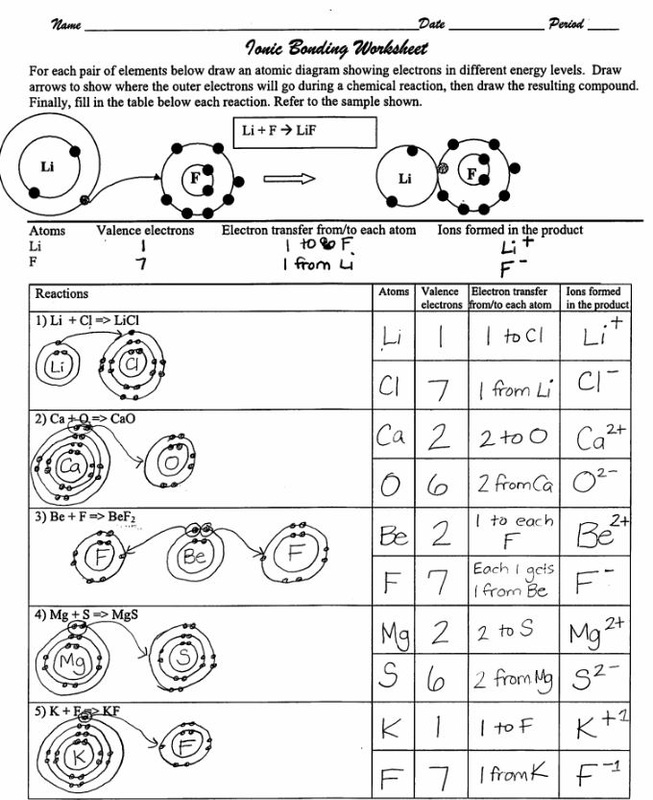

ION BONDING WORKSHEET ANSWERS HOW TO
Purpose: This is a worksheet that first shows students how to calculate electronegativity difference and use that as a way to identify ionic compounds. These are helpful to use if you have students who struggle with effective note-taking and either write nothing down at all or try to write everything (and fail to listen to actual lecture).Įssential Concepts: Periodic table, metals, nonmetals, metalloids, periods, families, groups, alkali metals, alkaline earth metals, transition metals, halogens, noble gases, lanthanides, actinides.Įlectronegativity and Dissociation Equations View Worksheet Purpose: This is a fillable notes outline to accompany the ionic bonding and nomenclature Powerpoint. Ionic Bonding and Nomenclature Notes Outline View Worksheet Purpose: This Powerpoint goes through some practice problems dealing with calculating electronegativity difference, dissociation of ionic compounds in water, and the naming of all types of ionic compounds: binary, polyatomic, ones with transition metal cations, and acids.Įssential Concepts: Ions, ionic compounds, ionic bonding, electronegativity, dissociation, cations, anions, binary ionic nomenclature, transition metals, binary acids, ternary acids, polyatomic compounds.

Ionic Bonding and Nomenclature Powerpoint Lecture View Powerpoint Next, students learn how to name binary ionic compounds, ionic compounds with transition metals, polyatomic ionic compounds, and acids. First, students learn about ionic bonding and what makes a compound ionic, including electronegativity differences. This unit covers all aspects of ionic compounds.


 0 kommentar(er)
0 kommentar(er)
